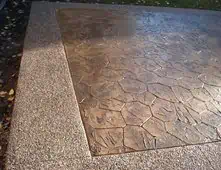[tm_pb_section admin_label="section" transparent_background="on" allow_player_pause="off" inner_shadow="off" parallax="off" parallax_method="off" custom_padding="258px||108px|" custom_padding_tablet="100px||50px|" custom_padding_last_edited="on|phone" padding_mobile="off" make_fullwidth="off" use_custom_width="off" width_unit="on" make_equal="off" use_custom_gutter="off" background_image="https://www.northeastdecorativeconcrete.com/wp-content/uploads/2017/11/pool-deck.jpg"][tm_pb_row admin_label="row" make_fullwidth="off" use_custom_width="off" use_grid_padding="on" width_unit="on" padding_mobile="off" allow_player_pause="off" parallax="off" parallax_method="off" make_equal="off" parallax_1="off" parallax_method_1="off" vertical_alligment_1="start" responsive_laptop_1="inherit" responsive_tablet_1="inherit" responsive_phone_1="inherit" order_laptop_1="1" order_tablet_1="1" order_phone_1="1" column_padding_mobile="on"][tm_pb_column type="4_4"][tm_pb_text admin_label="Text" text_orientation="left" use_border_color="off" border_color="#ffffff" border_style="solid"]

We service all of New Hampshire (NH) , Massachusetts (MA) , and Maine (ME) with Decorative Concrete, Stamped Concrete, Epoxy Floor Coatings, and Garage Flooring. We have a large selection of colors and patterns! Give us a call for your next concrete project. We provide Free Estimates.
Is Stamped Concrete Slippery?
Stamped concrete is a popular way to add decorative touches to a driveway, patio, or walkway. It can be used to create a wide variety of designs and patterns. One question that often comes up is whether stamped concrete is slippery.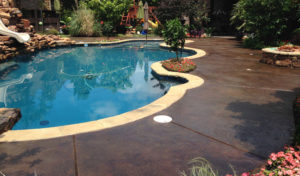 Before using stamped concrete, it is important to take precautions to make sure that the surface of the concrete is safe for walking on. Concrete swimming decks may be slippery and thus dangerous if not properly installed by a skilled professional sealing concrete contractor.
Before using stamped concrete, it is important to take precautions to make sure that the surface of the concrete is safe for walking on. Concrete swimming decks may be slippery and thus dangerous if not properly installed by a skilled professional sealing concrete contractor.
Does Stamped Concrete get Slippery When it is Wet?
Yes, stamped concrete can get slippery when wet. However, there are ways to make it safer. You can add a nonslip additive or a sealer with a nonslip formula. This helps reduce slipperiness. In the United States, we check how slippery concrete is using the Static Coefficient of Friction (SCOF). This test helps determine how hazardous the surface is. The ASTM C1028 test measures the SCOF. It checks the friction between a surface and a rubber-soled shoe. This test is standard in construction and assesses how slip-resistant different cement surfaces are. Other tests, like the pendulum test, can also measure slip resistance. The pendulum test is recognized worldwide and measures the angle at which a rubber-soled shoe slips. A higher angle means better slip resistance. Adding texture can make stamped surfaces more slip-resistant than smooth ones. The tribometer is the most common tool for measuring slip resistance. A NATA-accredited contractor can perform wet pendulum tests and ramp tests. A wax coating can enhance sparkle and slip resistance. SparkleTuff™ Clear Anti-Slip Floor Coating is a transparent abrasive coating. It has passed the McDonald’s Restaurants test for sustainable slip resistance. It maintains its wet slip resistance even after over 1,000,000 people have walked on it.How Slippery is Stamped Concrete With No Slip Resistance Additive
Decorative concrete is a popular surface for patios, driveways, and walkways. It is attractive and relatively affordable. However, one concern with stamping concrete is its potential to be slippery when wet if not properly installed correctly. In order to help you decide if concrete stamping is the right choice for your project, it is important to understand how slippery it can be if you do not hire a professional skilled sealing stamped concrete contractor that will provide you with a 100 percent nonslip surface. The coefficient of friction (COF) of a surface measures how resistant it is to slipping. The COF of stamped concrete ranges from 0.4 to 0.6, which means it can be quite slippery stamped concrete when wet without slip-resistance additives. This makes it a poor choice for areas where people will be walking or driving in wet weather. If you are considering using colored textured concrete in a location where rain or snow is likely to occur, make sure you take into account its potential to be slippery if there is no slip-resistance additives added to the surface of the sealer.Factors That Make Stamped Concrete Slippery
One main concern about stamping concrete is its slipperiness. This issue is significant, especially in outdoor areas or near pools. Many things can make decorative concrete slippery, so it's important to know this before you install it. The type of sealant used on the concrete is essential. Many sealants can make surfaces slick, so choose one that won't. Second, the wetness of the surface affects slipperiness. The concrete becomes more slippery if it's raining or if water is present. Lastly, the texture of the stamp also influences how slick the surface is. Some textures are more prone to causing slips. Using a sealant with built-in slip resistance helps keep the wet surface safe. Apply thin coats of sealer to avoid a thick layer that could make it slippery. To boost slip resistance, you can add H&C SharkGrip Slip-Resistant Additive to your sealer. Your stamped concrete's texture, size, and height also impact slip resistance. For a non-slip finish, make sure the texture offers good traction. Too much texture can cause slipping in wet conditions. The timing of stamping is crucial, too. Wait too long after pouring the concrete, and you may not get the right texture, which can make it slippery when wet or icy. So, hiring a skilled contractor who knows decorative concrete is essential. They will know the right materials to use. Choosing the wrong sealer can make the surface very slippery. However, using the correct reseal sealer will ensure safety, even with bare feet in the rain.Ways to Prevent Stamp Concrete From Being Slippery
Decorative concrete is a favorite for driveways, walkways, and patios. People love it for its attractive look. Concrete stamping can be slippery when wet. This can be dangerous if it’s not installed correctly. There are several ways to prevent stamp concrete from being slippery:
1. Add a sealant with slip resistance that will be built into the surface of the concrete. A proper sealant will help to make the surface less slippery and will also protect it from weathering and staining. 2. Install a textured finish. A textured finish will help to improve traction and prevent slips and falls. 3. Use a non-slip additive in the cement sealer. A non-slip additive will add extra traction to the surface of the concrete and make the concrete surface non slippery year around.Make Stamped Concrete Less Slippery Using Shark Grip
Sealers protect and enhance concrete surfaces. Many types are available, but most resist stains and fading. They can also improve slip resistance.
Recently, a slip-resistant additive was added to cement sealers to boost safety. This polymer creates a micro-rough surface on concrete. It increases traction and reduces slips and falls.
The additive works well indoors and outdoors, making it versatile. It’s suitable for both new and existing concrete surfaces. This makes it a convenient choice for improving safety.
How To Properly Use: Anti Slip Resistant Additive With Sealer
- Mix in 1pd of Gator Shark Grip slip resistance additive to a 5 gallon pail of sealer.
- Mix thoroughly with a drill and paddle for 5 to 10 minutes on low speed.
- Use a roller or sprayer to apply the sealer with the additive on each coat.
- For proper sealing, it is recommended to use 2 coats for adequate coverage.
We Use Gator Shark Grip Additive: To All Our New Installations
Slippery concrete can cause many workplace injuries. To prevent accidents, some concrete sealers include a slip-resistance additive named Gator Grip. This non-toxic, polymer-based material creates a tiny texture on the sealer's surface. This texture improves traction, helping to prevent slips and falls.
Gator Shark Grip stamped concrete is 100 percent effective in wet and dry conditions. It works well on indoor and outdoor cement surfaces. It's ideal for high-traffic areas. The additive resists stains and fading. This makes it great for high-wear areas.

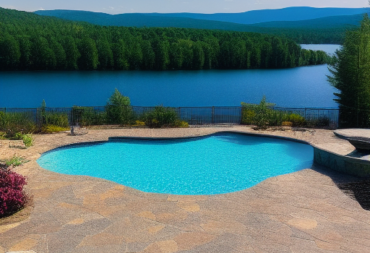
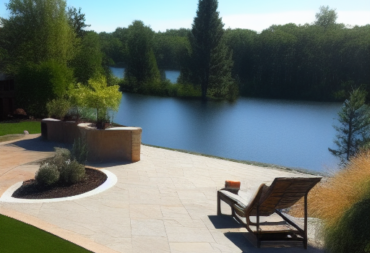
 [/tm_pb_text][/tm_pb_column][/tm_pb_row][/tm_pb_section][tm_pb_section admin_label="Section" fullwidth="off" specialty="off" transparent_background="on" allow_player_pause="off" inner_shadow="off" parallax="off" parallax_method="off" padding_mobile="off" make_fullwidth="off" use_custom_width="off" width_unit="on" make_equal="off" use_custom_gutter="off" background_image="https://www.northeastdecorativeconcrete.com/wp-content/uploads/2018/01/background.jpg"][tm_pb_row admin_label="Row"][tm_pb_column type="4_4"][tm_pb_text admin_label="Text" text_orientation="left" use_border_color="off" border_color="#ffffff" border_style="solid" text_font_size="18" text_text_color="#000000" saved_tabs="all"]
[/tm_pb_text][/tm_pb_column][/tm_pb_row][/tm_pb_section][tm_pb_section admin_label="Section" fullwidth="off" specialty="off" transparent_background="on" allow_player_pause="off" inner_shadow="off" parallax="off" parallax_method="off" padding_mobile="off" make_fullwidth="off" use_custom_width="off" width_unit="on" make_equal="off" use_custom_gutter="off" background_image="https://www.northeastdecorativeconcrete.com/wp-content/uploads/2018/01/background.jpg"][tm_pb_row admin_label="Row"][tm_pb_column type="4_4"][tm_pb_text admin_label="Text" text_orientation="left" use_border_color="off" border_color="#ffffff" border_style="solid" text_font_size="18" text_text_color="#000000" saved_tabs="all"]
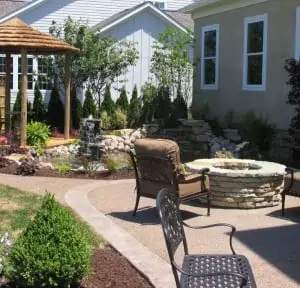 Stamped concrete is a popular decorative choice for driveways, sidewalks, and patios. It is made to look like brick, slate, or other materials, and can be customized with different colors and designs. But how long does stamped concrete last? And what should you do to maintain it?
Stamped concrete is a popular decorative choice for driveways, sidewalks, and patios. It is made to look like brick, slate, or other materials, and can be customized with different colors and designs. But how long does stamped concrete last? And what should you do to maintain it?
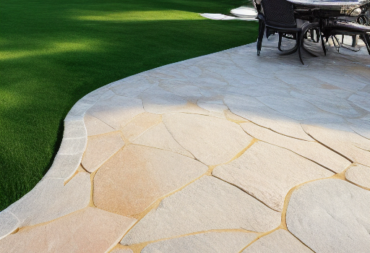
 [/tm_pb_text][/tm_pb_column][/tm_pb_row][/tm_pb_section][tm_pb_section admin_label="Section" fullwidth="off" specialty="off" transparent_background="on" allow_player_pause="off" inner_shadow="off" parallax="off" parallax_method="off" padding_mobile="off" make_fullwidth="off" use_custom_width="off" width_unit="on" make_equal="off" use_custom_gutter="off" background_image="https://www.northeastdecorativeconcrete.com/wp-content/uploads/2018/01/background.jpg"][tm_pb_row admin_label="Row"][tm_pb_column type="4_4"][tm_pb_text admin_label="Text" text_orientation="left" use_border_color="off" border_color="#ffffff" border_style="solid" text_font_size="18" text_text_color="#000000" saved_tabs="all"]
[/tm_pb_text][/tm_pb_column][/tm_pb_row][/tm_pb_section][tm_pb_section admin_label="Section" fullwidth="off" specialty="off" transparent_background="on" allow_player_pause="off" inner_shadow="off" parallax="off" parallax_method="off" padding_mobile="off" make_fullwidth="off" use_custom_width="off" width_unit="on" make_equal="off" use_custom_gutter="off" background_image="https://www.northeastdecorativeconcrete.com/wp-content/uploads/2018/01/background.jpg"][tm_pb_row admin_label="Row"][tm_pb_column type="4_4"][tm_pb_text admin_label="Text" text_orientation="left" use_border_color="off" border_color="#ffffff" border_style="solid" text_font_size="18" text_text_color="#000000" saved_tabs="all"]
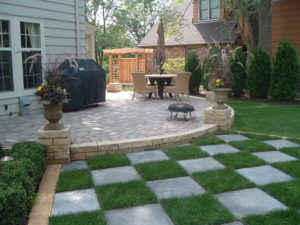
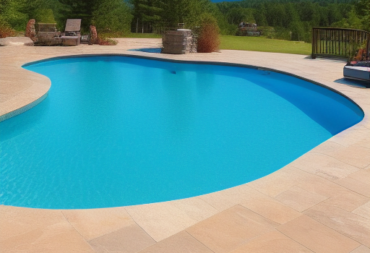
 [/tm_pb_text][/tm_pb_column][/tm_pb_row][/tm_pb_section][tm_pb_section admin_label="Section" fullwidth="off" specialty="off" transparent_background="on" allow_player_pause="off" inner_shadow="off" parallax="off" parallax_method="off" padding_mobile="off" make_fullwidth="off" use_custom_width="off" width_unit="on" make_equal="off" use_custom_gutter="off" background_image="https://www.northeastdecorativeconcrete.com/wp-content/uploads/2018/01/background.jpg"][tm_pb_row admin_label="Row"][tm_pb_column type="4_4"][tm_pb_text admin_label="Text" text_orientation="left" use_border_color="off" border_color="#ffffff" border_style="solid" text_font_size="18" text_text_color="#000000" saved_tabs="all"]
[/tm_pb_text][/tm_pb_column][/tm_pb_row][/tm_pb_section][tm_pb_section admin_label="Section" fullwidth="off" specialty="off" transparent_background="on" allow_player_pause="off" inner_shadow="off" parallax="off" parallax_method="off" padding_mobile="off" make_fullwidth="off" use_custom_width="off" width_unit="on" make_equal="off" use_custom_gutter="off" background_image="https://www.northeastdecorativeconcrete.com/wp-content/uploads/2018/01/background.jpg"][tm_pb_row admin_label="Row"][tm_pb_column type="4_4"][tm_pb_text admin_label="Text" text_orientation="left" use_border_color="off" border_color="#ffffff" border_style="solid" text_font_size="18" text_text_color="#000000" saved_tabs="all"]
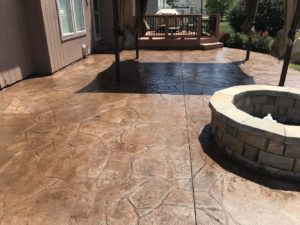
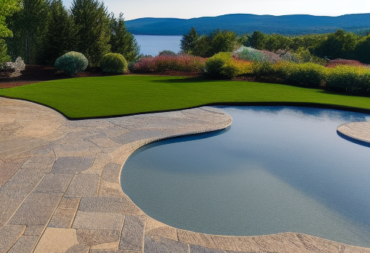
 [/tm_pb_text][/tm_pb_column][/tm_pb_row][/tm_pb_section][tm_pb_section admin_label="Section" fullwidth="off" specialty="off" transparent_background="on" allow_player_pause="off" inner_shadow="off" parallax="off" parallax_method="off" padding_mobile="off" make_fullwidth="off" use_custom_width="off" width_unit="on" make_equal="off" use_custom_gutter="off" background_image="https://www.northeastdecorativeconcrete.com/wp-content/uploads/2018/01/background.jpg"][tm_pb_row admin_label="Row"][tm_pb_column type="4_4"][tm_pb_text admin_label="Text" text_orientation="left" use_border_color="off" border_color="#ffffff" border_style="solid" text_font_size="18" text_text_color="#000000" saved_tabs="all"]
[/tm_pb_text][/tm_pb_column][/tm_pb_row][/tm_pb_section][tm_pb_section admin_label="Section" fullwidth="off" specialty="off" transparent_background="on" allow_player_pause="off" inner_shadow="off" parallax="off" parallax_method="off" padding_mobile="off" make_fullwidth="off" use_custom_width="off" width_unit="on" make_equal="off" use_custom_gutter="off" background_image="https://www.northeastdecorativeconcrete.com/wp-content/uploads/2018/01/background.jpg"][tm_pb_row admin_label="Row"][tm_pb_column type="4_4"][tm_pb_text admin_label="Text" text_orientation="left" use_border_color="off" border_color="#ffffff" border_style="solid" text_font_size="18" text_text_color="#000000" saved_tabs="all"]
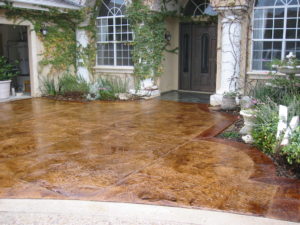
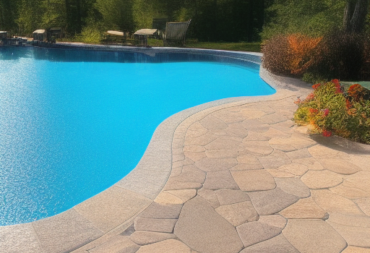
 [/tm_pb_text][/tm_pb_column][/tm_pb_row][/tm_pb_section][tm_pb_section admin_label="Section" fullwidth="off" specialty="off" transparent_background="on" allow_player_pause="off" inner_shadow="off" parallax="off" parallax_method="off" padding_mobile="off" make_fullwidth="off" use_custom_width="off" width_unit="on" make_equal="off" use_custom_gutter="off" background_image="https://www.northeastdecorativeconcrete.com/wp-content/uploads/2018/01/background.jpg"][tm_pb_row admin_label="Row"][tm_pb_column type="4_4"][tm_pb_text admin_label="Text" text_orientation="left" use_border_color="off" border_color="#ffffff" border_style="solid" text_font_size="18" text_text_color="#000000" saved_tabs="all"]
[/tm_pb_text][/tm_pb_column][/tm_pb_row][/tm_pb_section][tm_pb_section admin_label="Section" fullwidth="off" specialty="off" transparent_background="on" allow_player_pause="off" inner_shadow="off" parallax="off" parallax_method="off" padding_mobile="off" make_fullwidth="off" use_custom_width="off" width_unit="on" make_equal="off" use_custom_gutter="off" background_image="https://www.northeastdecorativeconcrete.com/wp-content/uploads/2018/01/background.jpg"][tm_pb_row admin_label="Row"][tm_pb_column type="4_4"][tm_pb_text admin_label="Text" text_orientation="left" use_border_color="off" border_color="#ffffff" border_style="solid" text_font_size="18" text_text_color="#000000" saved_tabs="all"]
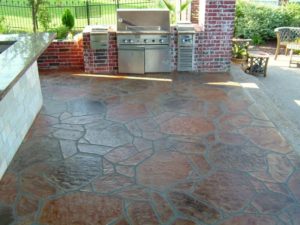
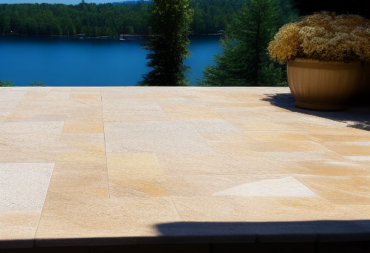
 [/tm_pb_text][/tm_pb_column][/tm_pb_row][/tm_pb_section][tm_pb_section admin_label="Section" fullwidth="off" specialty="off" transparent_background="on" allow_player_pause="off" inner_shadow="off" parallax="off" parallax_method="off" padding_mobile="off" make_fullwidth="off" use_custom_width="off" width_unit="on" make_equal="off" use_custom_gutter="off" background_image="https://www.northeastdecorativeconcrete.com/wp-content/uploads/2018/01/background.jpg"][tm_pb_row admin_label="Row"][tm_pb_column type="4_4"][tm_pb_text admin_label="Text" text_orientation="left" use_border_color="off" border_color="#ffffff" border_style="solid" text_font_size="18" text_text_color="#000000" saved_tabs="all"]
[/tm_pb_text][/tm_pb_column][/tm_pb_row][/tm_pb_section][tm_pb_section admin_label="Section" fullwidth="off" specialty="off" transparent_background="on" allow_player_pause="off" inner_shadow="off" parallax="off" parallax_method="off" padding_mobile="off" make_fullwidth="off" use_custom_width="off" width_unit="on" make_equal="off" use_custom_gutter="off" background_image="https://www.northeastdecorativeconcrete.com/wp-content/uploads/2018/01/background.jpg"][tm_pb_row admin_label="Row"][tm_pb_column type="4_4"][tm_pb_text admin_label="Text" text_orientation="left" use_border_color="off" border_color="#ffffff" border_style="solid" text_font_size="18" text_text_color="#000000" saved_tabs="all"]
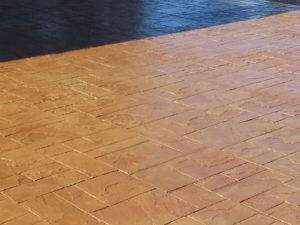 The best sealer for stamped concrete is one that will protect it from staining and fading while still allowing it to breathe. It should also be easy to apply and affordable.
The best sealer for stamped concrete is one that will protect it from staining and fading while still allowing it to breathe. It should also be easy to apply and affordable.
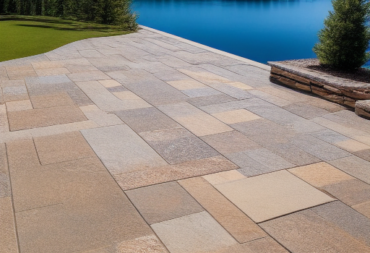
 [/tm_pb_text][/tm_pb_column][/tm_pb_row][/tm_pb_section][tm_pb_section admin_label="Section" fullwidth="off" specialty="off" transparent_background="on" allow_player_pause="off" inner_shadow="off" parallax="off" parallax_method="off" padding_mobile="off" make_fullwidth="off" use_custom_width="off" width_unit="on" make_equal="off" use_custom_gutter="off" background_image="https://www.northeastdecorativeconcrete.com/wp-content/uploads/2018/01/background.jpg"][tm_pb_row admin_label="Row"][tm_pb_column type="4_4"][tm_pb_text admin_label="Text" text_orientation="left" use_border_color="off" border_color="#ffffff" border_style="solid" text_font_size="18" text_text_color="#000000" saved_tabs="all"]
[/tm_pb_text][/tm_pb_column][/tm_pb_row][/tm_pb_section][tm_pb_section admin_label="Section" fullwidth="off" specialty="off" transparent_background="on" allow_player_pause="off" inner_shadow="off" parallax="off" parallax_method="off" padding_mobile="off" make_fullwidth="off" use_custom_width="off" width_unit="on" make_equal="off" use_custom_gutter="off" background_image="https://www.northeastdecorativeconcrete.com/wp-content/uploads/2018/01/background.jpg"][tm_pb_row admin_label="Row"][tm_pb_column type="4_4"][tm_pb_text admin_label="Text" text_orientation="left" use_border_color="off" border_color="#ffffff" border_style="solid" text_font_size="18" text_text_color="#000000" saved_tabs="all"]
